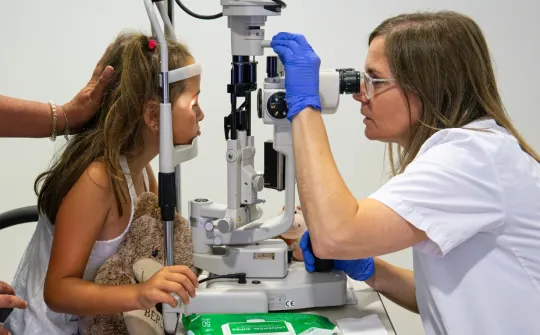
Thanks to advances in medicine and technology, most infants with bronchopulmonary dysplasia are able to have a good quality of life.
When a baby is born prematurely, it is possible that their organs are not prepared to function how they should outside of the womb. In the case of the lungs, prematurity can lead to varying levels of limited respiratory function, resulting in a chronic disease known as bronchopulmonary dysplasia. According to Dr Jordi Clotet, Neonatologist at the SJD Barcelona Children's Hospital, ‘one in five babies born before the 30-week mark will develop bronchopulmonary dysplasia.’
While it is a complex disease, bronchopulmonary dysplasia is much better controlled now than it was a few decades ago. ‘Treatment and evolution of the disease have changed significantly. Infants who previously would have had severe dysplasia now only experience a much milder version,’ affirms Dr Jordi Costa, Pediatrician specialising in pediatric pulmonology at the SJD Barcelona Children's Hospital.
Incidence rates for the disease, however, have not reduced. ‘That is because survival rates for premature infants is now much higher. We are better informed and have more resources, and this means more high-risk patients survive,’ adds Costa.
The importance of prevention
Clotet notes that bronchopulmonary dysplasia does not have an immediate diagnosis, but instead, it is detected after a few weeks of observation in the Neonatology Department. He adds: ‘Because of our highly precise criteria, when we suspect possible respiratory issues, we can act swiftly to prevent the infant from developing the disease.’ It is then that the Pulmonology Department is contacted.
‘When our colleagues detect respiratory difficulties in neonatal patients, we carry out a consultation to give our perspective on the diagnosis and treatment,’ explains Costa. In these cases, professionals recommend taking preventive actions: should the infant need help breathing, give the minimum amount of oxygen they need and avoid intubation. These measures help prevent bronchopulmonary dysplasia from developing.
Trying to prevent the disease is not limited to the postnatal period, however. Dr Clotet highlights that ‘before a child is even born, we try to delay premature birth as much as feasibly possible, and we give a medication to the mother that makes the fetus’ lungs develop. Family support after birth also plays a key role: ‘We encourage skin-to-skin contact and breastfeeding, because they help reduce risk and improve the infant's progress,’ he adds.
Family training
Despite preventative measures, some premature babies still develop bronchopulmonary dysplasia and their recovery process does not end at hospital discharge. Many of these children go home with respiratory support measures in place. That is why training family members is vital. ‘We show them how to use the devices and provide support throughout treatment until the child is able to breathe normally and we can remove the devices,’ says Costa.
The clinical course of bronchopulmonary dysplasia is usually positive. ‘The respiratory system matures with time. When the patient is two, three, or four years old, their risk decreases and they normalise,’ states Costa. Infants who have suffered from severe cases may still show some degree of lung fragility or recurrent episodes of bronchitis, so having a healthy lifestyle is key. The vast majority, however, ‘lead a totally normal, high quality life,’ confirms Clotet.




